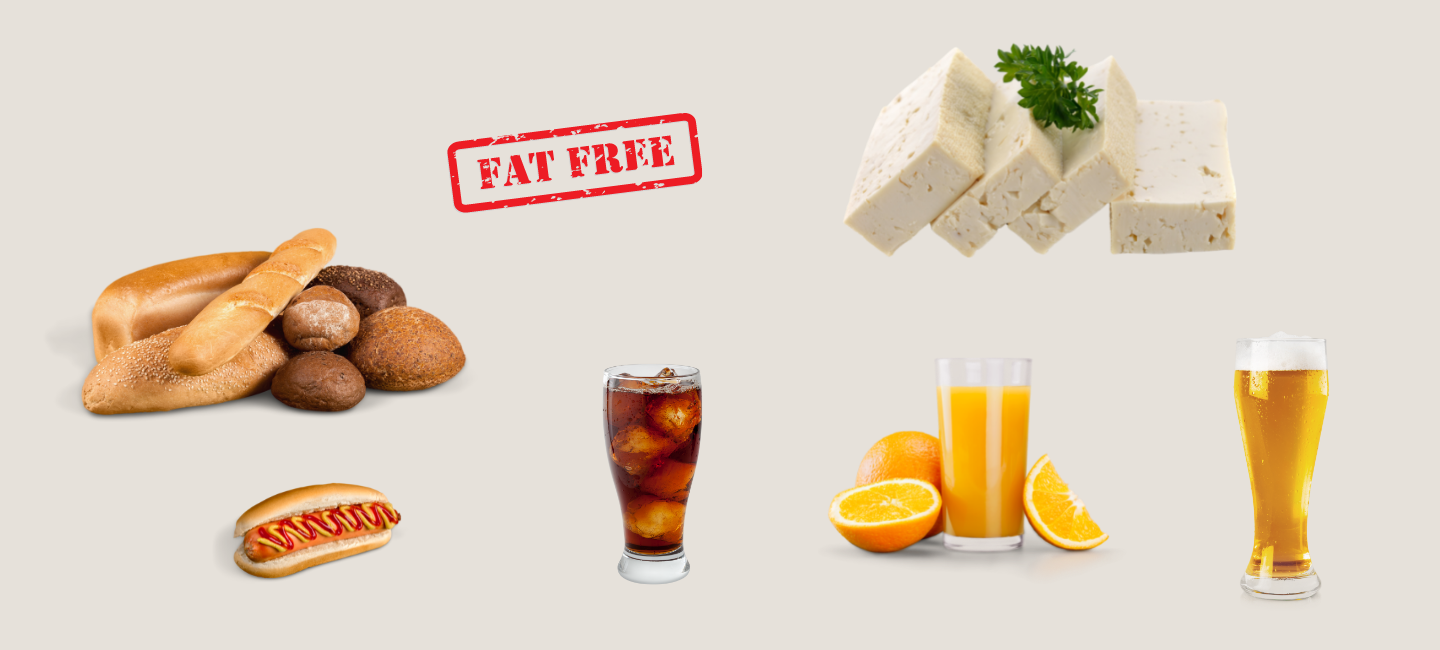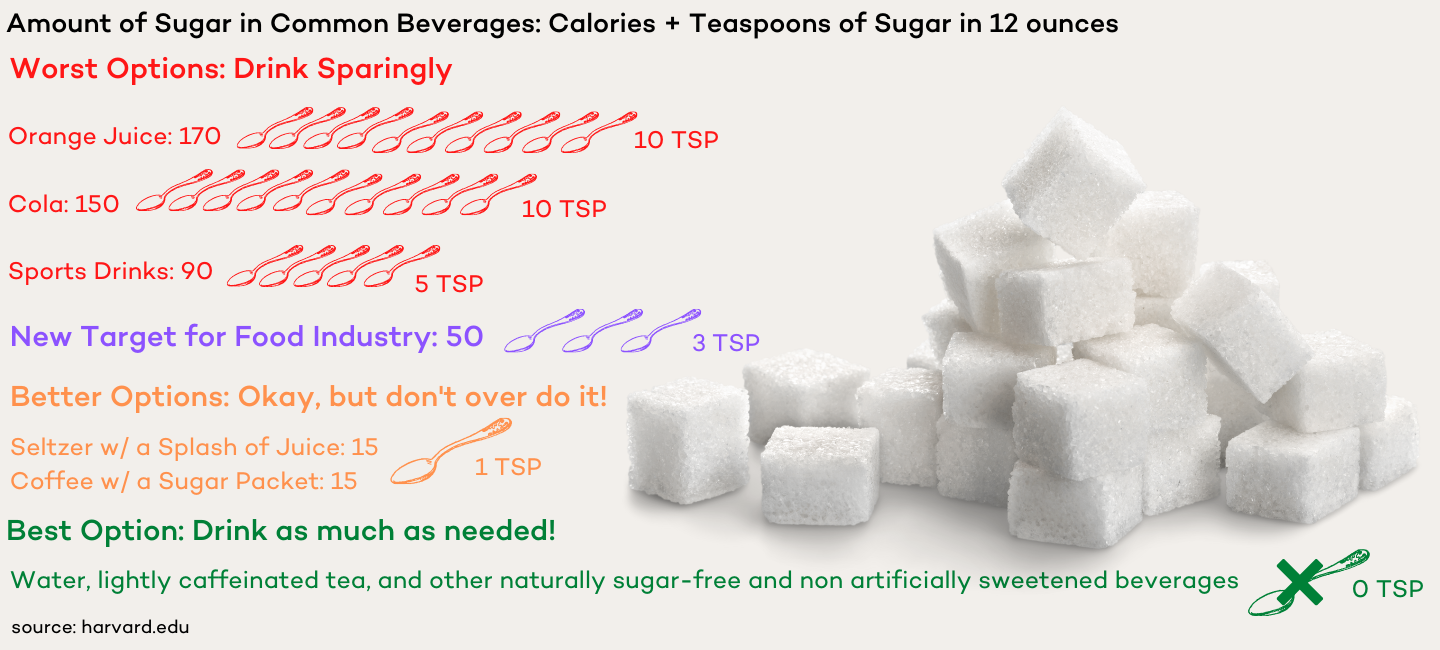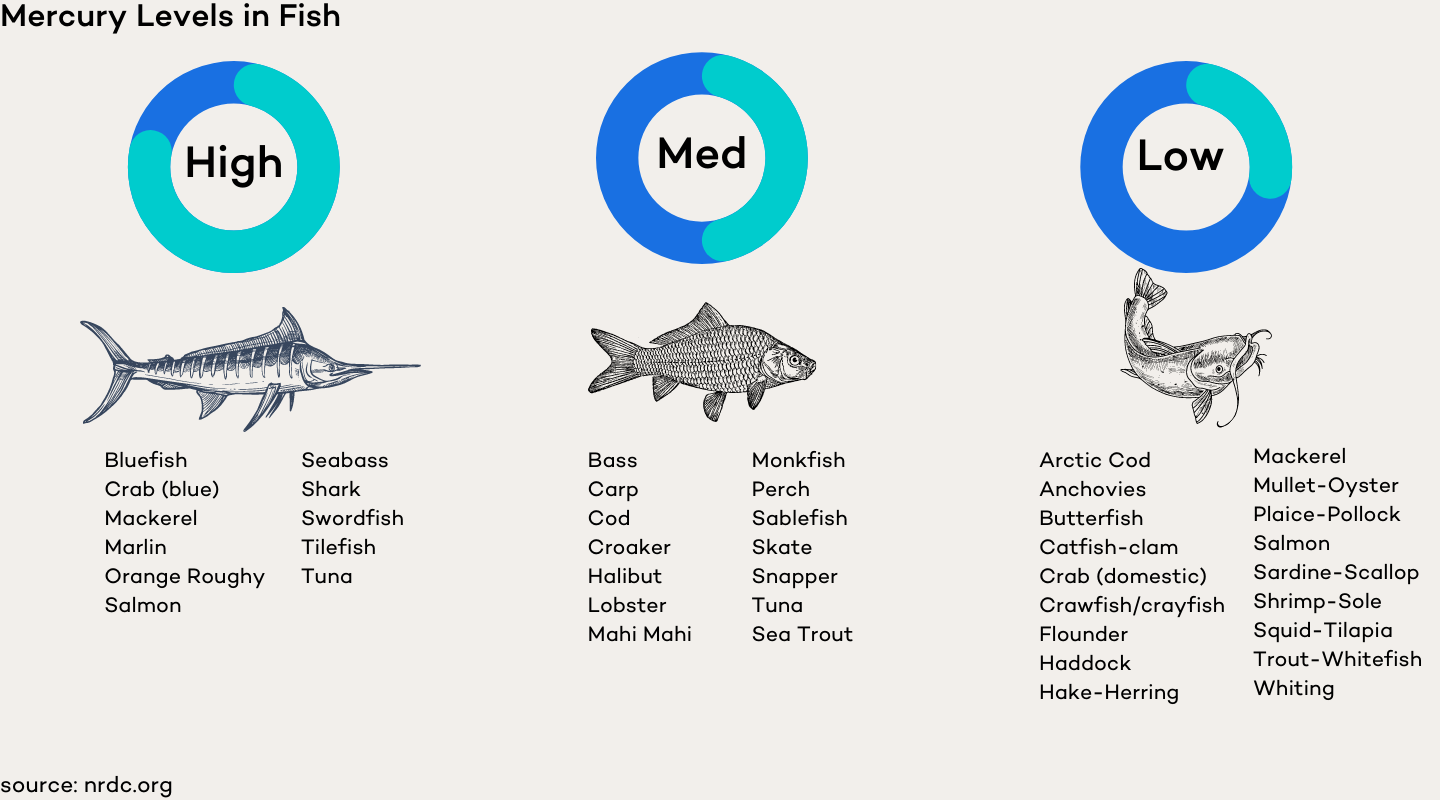Foods to Avoid When Trying to Get Pregnant

If you’re trying to conceive and looking for ways to optimize your lifestyle to increase your fertility, it’s important to know some foods to avoid when trying to get pregnant.
While knowing specific foods to avoid when trying to get pregnant is important, avoiding certain foods is only part of a well-formed fertility diet composed of important foods that actually boost fertility. Similarly, it’s important not to drive yourself crazy and allow yourself a well-deserved treat every once and a while without fretting over the fact that you just ate something from our list of foods to avoid when trying to get pregnant.
In this article, we will cover both foods and food groups to avoid when trying to conceive. With this knowledge in hand, you’ll be able to dodge (just about) every infertility-causing food that tries to make its way into your shopping cart or onto your dinner plate.
Soda and Other High Sugar Foods
Soda and other high sugar foods top our list of foods to avoid when trying to get pregnant. When it comes to fertility, sugar is not your friend. Sugar causes inflammation and glycation, which ages our organs (including the reproductive organs) and destroys cells. Sugar is hidden in many foods we eat regularly, from fruits and vegetables to baked goods and sauces. It’s prevalent in soda, energy drinks, and many sugar-sweetened beverages that go down easy and fast.
Research shows that sugar-sweetened beverages, particularly sodas and energy drinks, have an adverse effect on the fertility of both men and women. A study of women and their male partners who consumed at least seven sugar-sweetened beverages per week had a more difficult time getting pregnant than their counterparts who consumed no sugar-sweetened beverages.
Sugary beverages can affect egg quality. Another study of women undergoing IVF found that consuming higher quantities of sugary drinks was linked with 1.1 fewer total oocytes retrieved, 1.2 fewer mature oocytes retrieved, 0.6 fewer fertilized oocytes, and 0.6 fewer top-quality embryos than women who did not consume sugared soda.
This IVF study compared women who drank sugared soda with women who did not and found women who drank between 0.1 and a cup of soda per day had 12% fewer live births; women who drank more than a cup of soda per day had 16% fewer live births.
| Amount of Soda Consumed | .1-1 Cup of Soda | 1+ Cups of Soda |
| Live Birth Rate Decrease from Those Who Consume 0 Cups of Soda Per Day | 12% Decrease | 16% Decrease |
This same study concluded that sugar beverages had an even great impact on fertility than caffeinated beverages. Other studies have supported sugar’s greater impact over caffeine on reduced fertility, showing soda increases the length of time it takes to get pregnant and sugar’s link to ovulatory disorders.
Drinks with added sugar, like soda, lemonade, and sports and energy drinks are foods to avoid when trying to conceive. They provide virtually no other nutrients and lots of calories–almost all from added sugar.

High Carb Foods: Pasta, Grains, Bread, Baked Goods, Potatoes, etc.
Carbs are a close second in our list of top foods to avoid when trying to get pregnant. Any food that’s not a protein or fat is a carbohydrate. Although our bodies don’t require any carbs (just air, water, fat, and a little protein), that doesn’t stop most of us from over-indulging in bagels, chips, pasta, bread, cereal, and a whole host of other processed foods.
They are filling and comforting, but every carb we eat is eventually broken down into sugar. This includes both simple and complex carbs. And though most of us don’t think of fruits and vegetables as being carbs, they are. All plant material is composed of carbs.
Furthermore, when we eat carbohydrates, they cause a spike in blood sugar, which can cause inflammation, affect hormone balance, impede ovulation, and have been shown to have an overall detrimental effect on fertility, particularly when paired with a low fiber diet.
Carb Values of Common Foods
|
Food |
Measure |
Calories |
Carbs (in grams) |
|
Plain Bagel |
1 |
195 |
38 |
|
White Bread |
1 slice |
67 |
12 |
|
Corn Flakes |
1 cup |
102 |
24 |
|
Oat Cereal |
1 cup |
83 |
17 |
|
Graham Crackers |
2 |
60 |
11 |
|
Donuts |
1 |
198 |
23 |
|
Pasta (spaghetti) |
1 cup |
197 |
40 |
|
Brown Rice |
1 cup |
216 |
45 |
|
White Rice |
1 cup |
205 |
45 |
|
Red Kidney Beans |
1 cup |
225 |
40 |
|
Lima Beans |
1 cup |
216 |
39 |
|
Garba nzo Beans |
1 cup |
160 |
29 |
|
Lentils |
1 cup |
230 |
40 |
|
Green Beans |
1 cup |
40 |
9 |
|
Asparagus |
1 cup |
44 |
8 |
|
Beet Greens |
1 cup |
38 |
8 |
|
Cabbage (cooked) |
1 cup |
34 |
7 |
|
Carrots (cooked) |
1 cup |
70 |
16 |
|
Carrots (raw) |
1 cup |
31 |
7 |
|
Collard Greens |
1 cup |
35 |
8 |
|
Cucumber |
1 cup |
15 |
2 |
|
Eggplant |
1 cup |
26 |
6 |
|
Onions |
½ cup |
30 |
7 |
|
Peas |
1 cup |
118 |
21 |
|
Green Pepper |
1 cup |
28 |
6 |
|
Potatoes (baked) |
1 |
220 |
51 |
|
Radish |
5 |
8 |
0 |
|
Squash |
1 cup |
28 |
7 |
|
Sweet Potatoes |
1 cup |
117 |
28 |
|
Tomatoes |
1 |
26 |
6 |
|
Turnips |
1 cup |
28 |
8 |
|
Apple (med. size) |
1 |
81 |
21 |
|
Banana |
1 |
105 |
27 |
|
Grapes |
10 |
34 |
8 |
|
Raisins |
1 cup |
435 |
112 |
|
Butter |
1 Tbsp. |
108 |
0 |
|
Cheese |
1 oz. |
114 |
0 |
|
Milk – 2% |
1 cup |
115 |
12 |
|
Yogurt – plain, low-fat |
8 oz. |
155 |
18 |
Low-Fat Dairy
Research has shown that men and women have very different responses to dairy regarding its effect on fertility. While low-fat dairy (or no dairy whatsoever) may be okay for male fertility , in women, low-fat dairy products have been shown to be a food that causes infertility.
When the fat is removed from dairy products, male hormones called androgens get left behind. In women, these androgens interfere with the menstrual cycle and put them at risk for PCOS and infertility.
One study concluded that high-fat dairy products like whole milk showed a reduced risk of infertility due to lack of ovulation. In contrast, low-fat dairy products were associated with an increased risk in women.
A similar study also concluded that women with a high intake of low-fat dairy foods might be at increased risk of anovulatory infertility, whereas consuming high-fat dairy foods may decrease this risk.
This study of 18,555 women attempting to get pregnant found that those who ate full-fat dairy foods at least once per day had a 25% lower risk of fertility from ovulatory disorders than women who ate these foods less frequently. And women who ate two or more servings of low-fat dairy per day were 85% more likely to experience infertility due to anovulation than those who ate low-fat dairy only once a week.
| Women Who Ate Full-Fat Dairy ≥ 1 Per Day | Women Who Ate Low-Fat Dairy ≥ 2 Per Day |
| 25% lower risk of ovulatory disorders | 85% more likely to experience ovulatory infertility |
For women looking to maximize their fertility and reproductive health, low-fat dairy foods should be avoided when trying to get pregnant. Full-fat dairy is a better choice.
Trans Fats
Any food that includes trans fats is best avoided when trying to get pregnant or really for anyone trying to maximize their health and wellness. Trans fats (short for trans fatty acids) are primarily manufactured fats created in an industrial process that combines hydrogen with liquid vegetable oils to make them more solid. They appear on ingredient labels as partially hydrogenated oils.
Trans fats are often used for frying and are found in fried foods like doughnuts, pastries, cakes, cookies, margarine, and shortening. They are cheap and add lots of flavor to various foods but aren’t improving your health or chances of conceiving.
Trans fats can be damaging to anyone, causing inflammation and insulin resistance, but are particularly bad for men and women trying to conceive. Sperm health is affected in men and in women, every 2% increase in consumption of energy from trans fats (the equivalent of 1 ½ tbsp of margarine) increases the risk of anovulation by 73%!
Trans fats consumption was found to have an inverse relationship with sperm count, where total sperm count decreased as trans fat intake increased, ranging from 144 in the lowest consumption group to 89 in the highest trans fat consumption group.
For your best fertility, any food containing trans fats is best avoided when trying to get pregnant. Saturated fats, preferably from animal sources, are a much better choice, along with avocados or coconut oil.
Processed Meats
Like trans fats, processed meats like sausage, bacon, and hot dogs have been associated with reduced fertility in both men and women and are foods to be avoided when trying to get pregnant. Processed meats may be high in trans fats, which are associated with lower fertility, and frequently contain preservatives like nitrates and nitrites.
In a recent Harvard study, researchers found that frequent consumption of processed meats may harm a man’s ability to fertilize an egg, but eating more poultry may improve his chances.
Men who ate fewer than 1.5 servings of processed meats per week had a 28% better chance of achieving pregnancy than men who ate 4.3 servings per week.
Another study found that men who consumed large amounts of processed meat had lower sperm quality, count, and motility than men who consumed fish instead.
Men in this study who consumed the highest quantities of processed meat had, on average, 1.7 percentage units fewer morphologically normal sperm than men with the lowest processed meat consumption in the study.
As with most things in our diets, foods in their natural form (e.g., unprocessed) are generally healthier choices.
Excess Alcohol
To protect the fetus’s health, limiting alcohol consumption when you’re already pregnant is a well-known recommendation. But what many don’t realize is that even moderate alcohol consumption by the male or female partner can impair a couple’s ability to conceive.
For men, drinking alcohol can negatively impact sperm quality, reduce libido, and decrease sexual function.
In women, drinking alcohol can cause an imbalance in sex hormones, affect ovulation, and prolong the length of time it takes to get pregnant. Alcohol has been found to disrupt a woman’s menstrual cycle, , which is not helpful when a couple is trying to conceive naturally.
One study of women beginning an in vitro fertilization (IVF) treatment who drank four or more drinks per week found they were 16% less likely to have a live birth than women who drank less than 4 alcoholic drinks or not at all. When both the male and female partners drank at least four drinks a week, the live birth rate went down to a 21% less chance of having a live birth when compared to couples who didn’t drink or drank less than four drinks per week.
While an occasional glass of wine or a couple of beers with friends won’t stop you from getting pregnant, men and women who are already seeking treatment for infertility are encouraged to minimize or eliminate alcohol consumption, as it can negatively impact their ability to conceive.
Excessive Caffeine
Wondering if caffeine is a food to avoid when you’re trying to get pregnant? Could that morning cup of coffee be hurting your chances of conceiving? Probably not if you’re not going back for refills 4-5 times throughout the day.
Based on a research review, it is the opinion of the American Society for Reproductive Medicine that “moderate caffeine consumption (1 to 2 cups of coffee per day or its equivalent) before or during pregnancy has no apparent adverse effects on fertility or pregnancy outcomes. In men, caffeine consumption does not affect semen parameters.”
However, if you’re caffeine consumption is on the higher end, more than 5 cups a day, this level of consumption has been associated with decreased fertility, and it can take approximately 11% longer to get pregnant and can put pregnant women at higher risk for miscarriage.
Processed Foods
Processed foods hardly resemble anything planted or grazing on a farm and are foods to be avoided when trying to get pregnant. Highly processed foods tend to have long lists of ingredients, many of them unfamiliar and difficult to pronounce. They are a food to avoid when trying to get pregnant. These are the boxes and bags of foods that line the inner shelves of your local grocery store. They are quick, “instant,” tasty, and highly refined and processed.
These industrially processed foods are chock full of chemicals, preservatives, flavor enhancers, and more than a few of the six thousand other chemicals the FDA says are okay to put in our food.
With 75% of the world’s food sales composed of industrially-processed products , there’s been a significant impact on the health and fertility of men and women everywhere.
Characteristics of Unprocessed Foods vs. Processed Foods
|
|
Ultra-Processed Food |
Unprocessed Food |
|
Fiber |
Partially or completely removed |
Intact |
|
Salt (sodium) |
High in added salt, increases palatability, but skews sodium to potassium ratio |
Naturally low sodium |
|
Potassium |
Low in potassium |
Vegetables and fruits are naturally high in potassium. High potassium to sodium ratio benefits blood pressure |
|
Color & Flavor |
Synthetic – no nutritional value and may be detrimental |
Signifies polyphenols, natural antioxidants, good for microbiome |
|
Free Sugars |
Contain concentrated calories but no nutrients; added to many processed foods to increase palatability |
Rarely occur naturally in whole foods |
|
Effect on Microbiome |
Starve the microbiome; provide little microbial accessible carbohydrates (MACs) unless added to food |
Most whole plant foods are naturally high in many types of MACs |
|
Added Emulsifiers |
Commonly added; have adverse effect on gut epithelial cells and microbiome causing inflammation |
Those that occur in whole foods do not have negative effects on the gut (i.e., egg yolks) |
|
Vitamins & Minerals |
Many removed; may add back single forms of isolated synthetic vitamins or minerals |
A complex array of vitamins & minerals in many natural forms |
|
Water Content |
Virtually no water; making it energy-dense per volume. Less filling, little volume |
Most whole foods have water content, giving them more volume |
|
Calories per volume |
Highly concentrated energy; once fiber and water are removed. Fills a very small volume of the stomach for the calories contained; do not activate stretch receptors until excess is eaten (i.e., feel full slower) |
Less concentrated; almost all whole foods contain lots of water and plant foods contain fiber. Fill a greater volume of the stomach, activating stretch receptors at less calories than processed foods (i.e., feel full faster) |
|
Highly isolated ingredients |
Virtually pure fat or oil, pure starch and sugar |
Food in whole forms has fiber, nutrients, water, and a mix of micronutrients |
|
Combination |
An unnatural combination of sugar, fat, and starch, which produces highly palatable food. Also add flavors, flavor enhancers, salt, and the method of cooking makes end product very rewarding and prone to overeating |
Refined starch, sugar, and fats do not occur naturally together in nature |
|
Preservatives |
Chemical preservatives that may have adverse side effects for some |
Food degrades if not preserved. Natural methods of preservation, like fermentation, have positive health benefits |
|
Protein Content |
A meal composed of processed foods contains no protein, which is a problem for appetite regulation |
High carbohydrate plant foods contain some protein; mixed meals always contain protein if a protein source is added |
|
Omega-6 to Omega-3 Ratio |
Fats high in omega 6, excess pro-inflammatory, low in omega 3s |
Low in omega-6s, higher in omega 3s |
Refined snacks have been associated with poor sperm concentration, morphology, and motility, which impairs fertility. In women, a higher intake of fast food in the preconception period is associated with a longer time to pregnancy (TTP) and can put women at risk for ovulatory infertility.
Our bodies don’t recognize many of these chemicals and launch a response against the invaders. They cause inflammation and mutations in our cells. Industrially processed foods have been linked to cancer , compromised immune systems , reproductive mutation , mental and memory decline , and a host of other health ailments.
Choose whole-natural foods as much as possible. Highly processed foods are foods to avoid when trying to get pregnant, but if you must eat processed foods, look for shorter ingredient lists and ingredients you recognize. With just a few ingredients, there are less likely to be harmful additives and preservatives.
High Mercury Fish
While many fish species are a great source of omega-3 fatty acids, seafood high in mercury is a food best avoided when trying to get pregnant.
If you frequently eat mercury-rich fish like swordfish, tuna, and Chilean seabass, you can build up mercury stores in your body, which can affect your ability to get pregnant, and once pregnant, can affect your baby’s developing nervous system, which develops very early in gestation.
Mercury exposure damages sperm DNA and can result in abnormal sperm morphology and motility.
Higher mercury levels are related to a higher incidence of menstrual and hormonal disorders and increased rates of adverse reproductive outcomes.
In short, mercury can decrease your fertility. Choose seafood low in mercury. If you choose to eat species in the medium to high categories, only eat them occasionally.

Soy-Based Foods
Rounding out our list of foods to avoid when trying to get pregnant is anything made with soy. Soy is a common protein substitute, particularly for vegetarians or vegans, and is found in various foods like tofu, tempeh, different soy milks, and flours. There’s been conflicting research on soy’s impact on male and female fertility.
The concern stems from the fact that phytoestrogens (the plant form of estrogens) are naturally found in soybeans and are similar to the female hormone estrogen. Some scientists believe the additional estrogen activity can create an estrogen-progesterone imbalance that could impair endocrine function, egg production, and ovulation and that soy may lower sperm count in men.
The conclusions of these studies have been challenged. Another study of women undergoing IVF who ate soy experienced favorable results.
Until definitive conclusions can be reached, we recommend avoiding soy-based foods when you’re trying to get pregnant.
Other Ways To Boost Fertility
Beyond avoiding certain foods when trying to get pregnant, there are additional ways you can increase your fertility.
Eat High Fat
Eating high-fat foods from animal sources can suppress and protect your body from inflammation. When paired with a low-carb diet, rib-eye steak, salmon, pork belly, butter, full-fat dairy, and other fat-rich foods are known fertility boosters because they quell inflammation. Research shows that fatty acid intake reduces key markers for inflammation, including C-Reactive Proteins levels , Fats in our diet are critical for limiting and preventing inflammation .
Take Supplements
Even though you’re managing your nutrient intake through diet, it can be difficult to get the right balance of vitamins and minerals. Supplements are an easy and convenient way to ensure you have the right mix and levels of key biomolecules. Studies have shown that both male and female fertility is affected by micronutrient deficiencies and enhanced through supplementation.
In conclusion, Fertility supplements can help improve egg quality and sperm parameters and prepare your body for pregnancy. We recommend Molecular Fertility for trusted and fertility-specific supplements.
Reduce Stress
Several recent studies have found links between a woman’s levels of day-to-day stress and lowered chances of pregnancy, perhaps because your body recognizes times of stress are not ideal for having babies.
In men, chronic stress has been linked to decreased sperm quality and quantity.
Therefore, lots of stress doesn’t help your chances of conceiving and may play a role in up to 30% of fertility problems. Low-impact exercise like yoga or a relaxing walk in nature, acupuncture, and even sex can all help release endorphins and lower cortisol levels.
Get Enough Sleep
Getting the right amount of shut-eye is not always esteemed as the health and fertility booster it is. Sleep plays a critical role in reproductive health. Sleep patterns drive the production, synthesis, and metabolism of reproductive hormones.
Sleep deprivation in men can reduce testosterone levels; in women, it can contribute to hormone imbalances, early pregnancy loss, failed embryo implantation, anovulation, and amenorrhea. .
Similarly, sleep time may even affect IVF outcomes. Researchers found pregnancy rates to be highest among moderate-sleepers (7-8 hours per night) versus short-time sleepers (4-6 hours) and long-time sleepers (9-11 hours).
Cut Out Smoking
Smoking isn’t good for your lung health or your reproductive health. The chemicals in cigarettes can damage the genetic material in sperm and eggs, making it challenging to get or stay pregnant.
The good news is that after quitting, both men and women have shown improved fertility , though women take longer than men after quitting to see improvement.
Get Some Sunshine
Sun on your skin feels good and does good. Exposure to sunlight triggers the body to produce Vitamin D. Several studies have suggested that Vitamin D is related to egg quality, and we know for sure that Vitamin D deficiencies are related to infertility.
Therefore, more sunshine means increased Vitamin D and increased fertility!
The Bottom Line
In conclusion, smart food and lifestyle choices can go a long way in supporting your and your partner’s fertility. The list of foods to avoid when trying to get pregnant isn’t all that different from the list your doctor or nutritionist might give to you if you said you were looking to improve your health. Healthy bodies are generally fertile bodies, and diet plays a pivotal role in your overall wellness, whether you’re a man or a woman.
Research suggests that a high-carb diet, foods with lots of preservatives and processing, and foods and drinks that contain lots of added sugar can harm fertility. Healthy lifestyle choices like staying active, not smoking or drinking alcohol, limiting caffeine, and managing stress can also help prepare your body for conception and a healthy 40 weeks of pregnancy.


